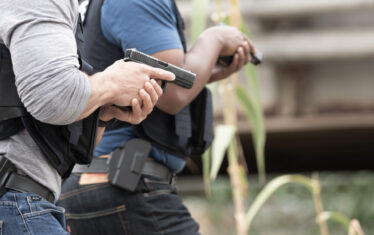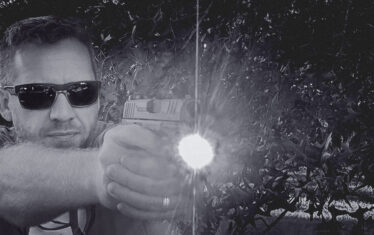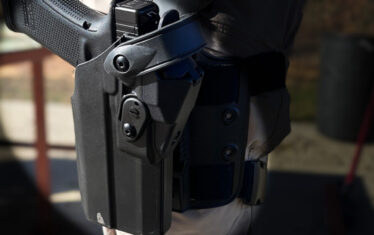In the 1962 film “Lawrence of Arabia,” American journalist Jackson Bentley (played by Arthur Kennedy) asks Major T.E. Lawrence, “What is it, Major Lawrence, that attracts you personally to the desert?”
Lawrence responds, “It’s clean.”
It is unknown if such an exchange really occurred between the two men, but it is true that outside of cities and urban areas, the desert can be quite clean. The same, of course, could be said for any region untouched by man. But the desert is unique for its wide open spaces that make it much easier for practically any rubbish to stand out. For much the same reason, the desert can present challenges when it comes to military camouflage.
It is also important to note that the desert and other arid regions can be unique from one another. In other words, deserts are far more diverse than just plains of sand and a few rocks.
This fact was quickly noted during the Gulf War in 1991, as the camouflage worn by the U.S. military proved ill-suited to the terrain in the Middle East — as it had been developed in California. As a result, by the time of the U.S.-led invasion of Iraq in 2003, an entirely different camo pattern was employed, and it proved to be only a slight improvement.
Thus the quest for the perfect desert camouflage continues.
Khaki: The Original Desert Camo
The first “camouflage” pattern used by modern militaries grew out of the drab colors that were worn by gamekeepers and just as often by poachers. By the Napoleonic Wars, the British Army’s rifle units — notably the 95th Rifles — were outfitted in green jackets. That was in contrast to the scarlet uniforms of the day and allowed the units to be better concealed on the battlefield.
As the British Empire expanded it also became apparent that heavy wool scarlet tunics were not suited for the tropical climate of the Indian subcontinent. Yet for the better part of 70 years, the British Honourable East India Company, as well as regular army troops that served in India, retained their scarlet uniforms.
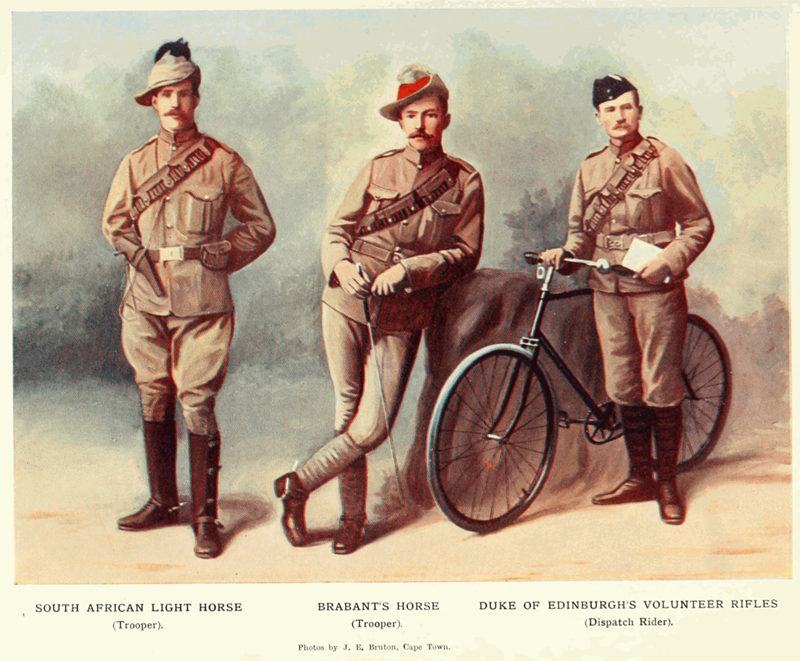
That finally changed when Sir Harry Lumsden raised a Corps of Guides in 1848 for frontier service at Peshawar, near the Afghan border in what is now Pakistan. Those troops wore a uniform based on their native attire rather than the scarlet tunics. In addition to being made of lighter, loose-fitting fabric, the clothing was dust-colored and closely matched the local soil.
It was dubbed “khaki” after the Persian word for dust.
The lightweight attire was quickly adopted by other British-Indian regiments during the Indian Mutiny of 1857 but then as quickly abolished. The rationale was that the British sought to retain its iconic “red coat” that was known throughout the world. However, function soon trumped form, and the British Army eventually adopted khaki tunics that were worn throughout its empire.
By the end of the 19th century, khaki became the first “universal” camouflage as it was adopted by most of the nations of Europe that had colonies overseas. One interesting irony is that in many cases European officers and NCOs were outfitted with their heavy wool “European” style uniforms, while colonial troops wore khaki-colored clothing made of lighter fabric. That no doubt contributed to the high number of European officers who succumbed to the heat and humidity in the distant colonies.
One other notable fact about khaki is that during the First World War, even as some nations in Europe — notably France and Austria — retained their colorful uniforms that proved ill-suited to a modern conflict, colonial troops were wearing relatively modern uniforms. Moreover, it could be said that the conflict was also the first time that both sides wore a form of camouflage that made it hard to tell friend from foe.
Beach Pattern Frogskin
In the years leading up to the Second World War, khaki was worn by the U.S. Army, U.S. Navy, and U.S. Marine Corps. Even today, the U.S. Navy and USMC continue to wear their khakis!
Prior to its entry in the conflict, the U.S. military sought to develop a camouflage.
The effort was led by Norvell Gillespie, a horticulturist and garden editor of Better Homes and Gardens, who looked to nature as a guide. He sought to develop a form of camouflage that could blend in with the surroundings by noting how the leaves of trees and plants offered more than just a solid field of green. As he saw it, forests are actually an assortment of colors, and Gillespie attempted to recreate it by using rounded shapes that mimicked nature.
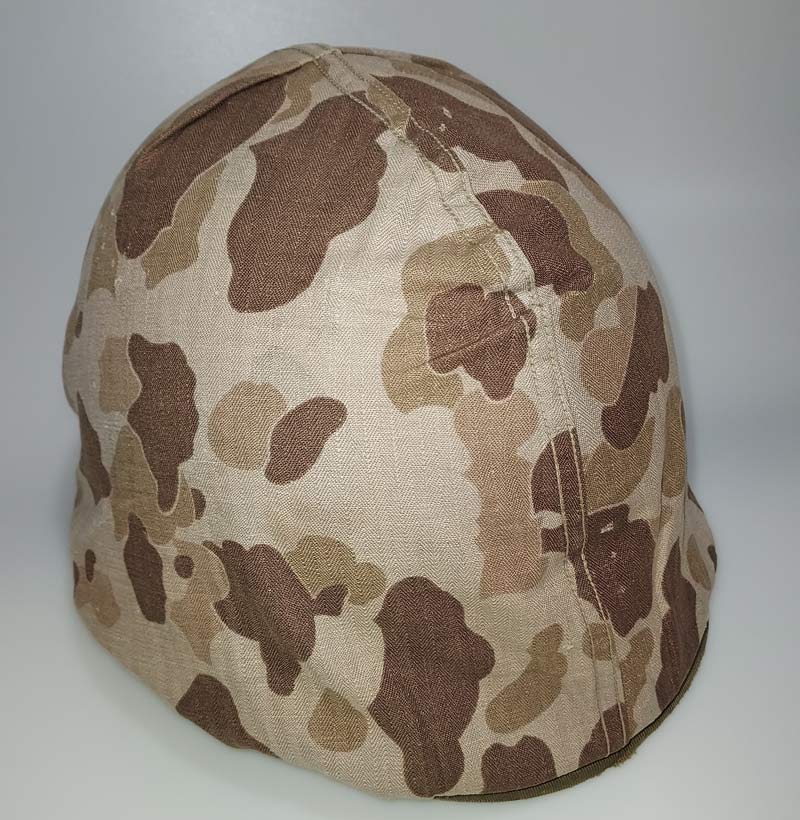
The pattern featured five colors in total and was nicknamed “frogskin” for its spotty pattern, which resembled the amphibious animals. Gillespie further designed the camouflage to have two faces, one that was green for spring and summer, while the other was brown for fall and early winter.
It would prove to be the first successful attempt by the U.S. military to produce a disruptive coloration camouflage — even though it has been argued that Gillespie’s attempt was more like an impressionist painting than a truly realistic take, but that was due to the technology of the early 1940s having its limitations. The camouflage of the era certainly lacked any depth, yet, frogskin should be seen as simply the beginning of U.S. military camouflage to evolve over the next 80+ years.
Though the reversible side was actually devised for fall/winter for Europe, there weren’t the same changes in colors in much of the Pacific, but the three-color pattern with a tan background was seen as suitable for use on the beaches as well as some of the volcanic islands in which the War in the Pacific was fought — and thus it has been sometimes described as the Beach Pattern Frogskin. However, it is important to note that it wasn’t really developed specifically for the beach.
DCU/Coffee Stain
In the post-war years consideration was again given to camouflage better suited to the desert terrain. The first serious attempt with the U.S. military occurred in the late 1940s with the U.S. Army’s fittingly named “Task Force Furnace” exercises in the Arizona desert. Various equipment, uniforms, and even a special sun helmet were tested, yet it seems no real consideration was made — likely because the U.S. became focused on Asia, first with the Korean War and then with Vietnam.

In the 1970s, the United States military also developed its woodland pattern camouflage for a potential conflict with the Soviet Union in Europe. However, as the Cold War wound down, it seemed that the U.S. and NATO might not be engaged in a conflict in Europe, and the Iraqi invasion of Kuwait in 1990 only further reinforced that sentiment.
The U.S. Army had already developed the Desert Battle Dress Uniform camouflage in 1977 that utilized a six-color scheme that became known as the “chocolate chip” pattern due to fact that it looked like cookie dough!
This DBDU camouflage was officially introduced in the 1990s and it was in use during Operation Desert Storm in 1991 and in Operation Restore Hope in Somalia in 1993. However, as it was developed in the rocky desert of California it didn’t blend into the sandy desert of the Middle East and East Africa. The U.S. military then went back to the drawing board and developed a three-color pattern known as Desert Camouflage Uniform (DCU) – nicknamed “coffee stain” by some U.S. personnel.

In developing the DCU desert soil samples from Saudi Arabia and Kuwait were examined, and that pattern was used in the October 2001 Operation Enduring Freedom and the 2003 Operation Iraqi Freedom.
One Camo Pattern Doesn’t Fit All
DCU was seen as a marked improvement over the DBDU, but the Pentagon sought to standardize the camouflage — so that the Army Combat Uniform (ACU) could be worn in any environment. That led to the development of the U.S. Army’s Universal Camouflage Pattern (UCP), which blended tan, gray, and green to work equally well in desert, woodland, and even urban environments.
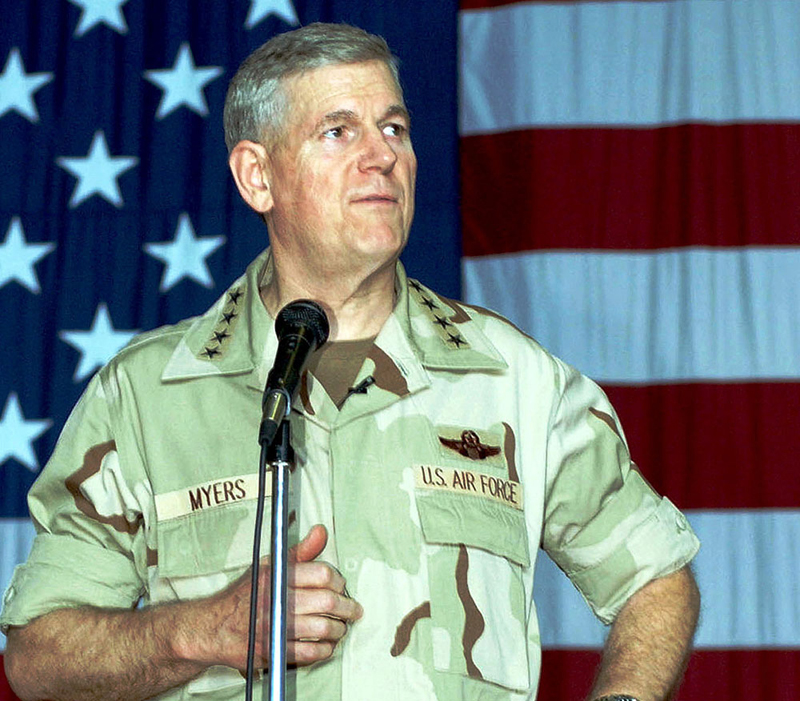
What is unique about the UCP is that the color black was omitted from the uniform as it was found that it is highly visible not only to the naked eye but also to modern optics. Instead, several shades of gray were incorporated. This pattern is sometimes known as a “digital camouflage” as the colors and pattern resembled computer pixels.
It may have seemed like an ideal compromise, but the effectiveness of the pattern was quickly questioned, and critics suggested the only thing truly universal about it was that it was ineffective in any terrain except for those seeking to hide behind their grandmother’s dated couch!
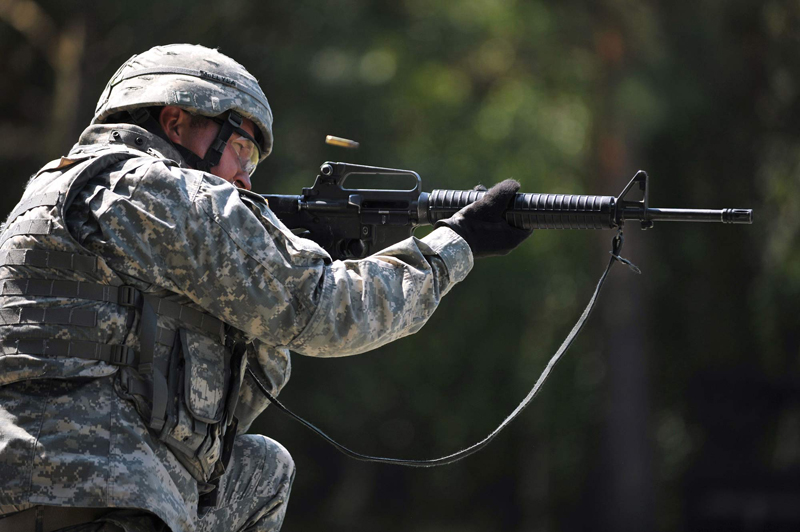
As a result, in July 2014 the U.S. Army announced that the seemingly high-tech digital camo was out and it returned to the Operational Camouflage Pattern (OCP) that was actually developed as part of the Object Force Warrior program in 2002. Codenamed Scorpion W2, it sought to improve upon the dated woodland pattern while featuring a similar palette. Another factor may have come into play — namely that the Pentagon owned the rights to the pattern for more than a decade.
While OCP was adopted as the U.S. Army’s main camouflage pattern, it employed a similar MultiCam as well. That pattern was developed for disparate environments and regions, and in addition to the standard pattern, an Arid version was introduced to reduce the visual and near-IR signature in desert environments that predominantly consist of open sand and rock.
The lesson learned leading up to MultiCam is that one camo pattern won’t work in all situations.
Desert MARPAT
While the U.S. Army was developing the unfortunate UCP, the United States Marine Corps went in another direction with its MARPAT. Though these may have seemed similar, especially as they were introduced around the same time and were described as being “digital,” they aren’t the same or even close to it.
For one thing, MARPAT had its positive qualities. It was developed to feature small rectangular pixels of color — and as with the UCP, the thinking was that this would be a more effective camouflage because it could mimic the dappled textures and rough boundaries found in natural settings. The idea is simple, small “blobs” or pixilated fractals, would blend into nature better than big “blobs” of colors.
MARPAT was found to be far more effective than the splotched woodland pattern in use at the time. It was also found to be effective in wet conditions — an important consideration given the Marines’ involvement in amphibious operations. The pattern proved effective when wet even when viewed with night vision illuminated with infrared scopes where other patterns would reflect the light in a way that would seem solid.

There were initially three MARPAT patterns tested by the Marines, including Woodland, Desert, and Urban. While keeping the rights for Urban, only the Woodland and Desert patterns were adopted by the Marine Corps for general issue, replacing the U.S. Woodland pattern and the U.S. Three-Color Desert pattern. The MARPAT Desert is also noted for including Coyote Brown, a mid-tone color common to both the woodland and desert patterns.
Desert Night Camo
Among the largely forgotten camo patterns developed for arid terrain is the Desert Night Camo and its origins began in the 1980s, back when the biggest threat was from the Soviet Union and its Warsaw Pact allies. At the time, the U.S. military began development of patterns of night camouflage.
It was discovered with infrared goggles, solid blacks stood out, and Desert Night Camouflage was meant to disrupt the then-primitive Soviet-era night vision devices. Instead of resembling the branches and leaves of the BDU, it consisted of a grid pattern that was intended to interfere with the generated grid used by those devices for targeting, while its colors consisted of Axolotl and Laurel Green.
It is unclear if the camouflage pattern was originally known as “Night Camouflage” or had another moniker, but when it was fielded during the initial combat operations in the Gulf War in 1991 it became described as “Desert Night Camouflage” or DNC.
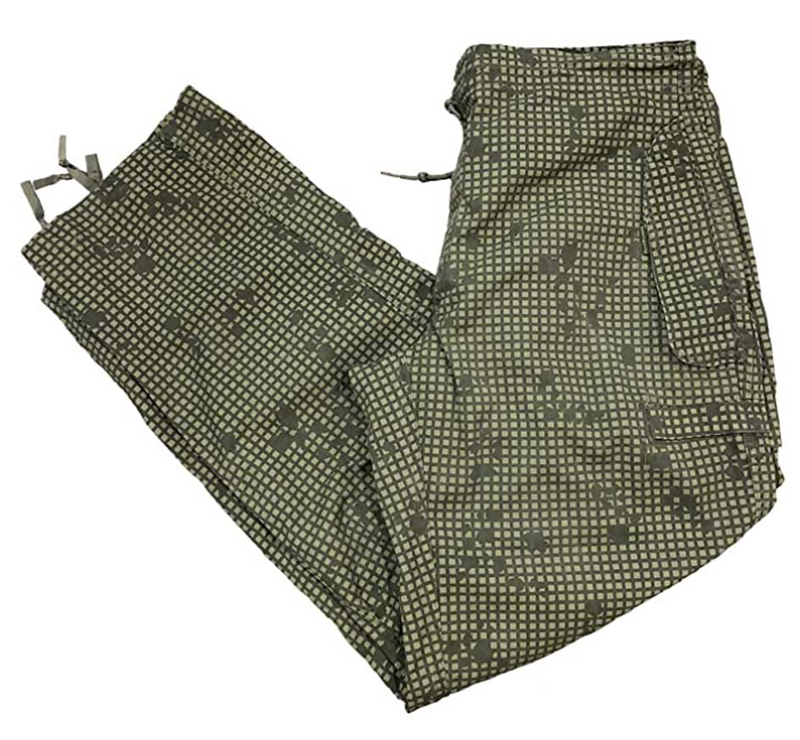
It has never been entirely clear if the DNC actually was successful in disrupting Soviet-era night vision devices, but by the early 1990s, the technology had improved so much that the green grid proved ineffective and some sources suggest it may have made detection easier. The vertical and horizontal lines and blotchy patterns may have stood out in the dark when seen through the goggles. In fact, in testing, it was determined that the DNC proved to be more visible than the day desert uniforms or even winter overwhite uniforms when viewed through the U.S. military’s AN/PVS-5 night vision goggles.
Desert Tiger Stripe
Another recent throwback to the Cold War has been Desert Tiger Stripe, a twist on the camouflage pattern that was worn by special operators during the Vietnam War. There were reports that Desert Tiger Stripe was first used by Iraqi commandos, while more recently U.S. Special Forces used a locally made variant in Afghanistan, which is fitting as the original Tiger Stripe was locally sourced in Southeast Asia.
The original Tiger Stripe was noted for its resemblance to a tiger’s stripes, featuring narrow stripes that look like brush-strokes of green and brown, and broader brush-strokes of black printed over a lighter shade of olive or khaki. The arid variant features the same style strokes but with various shades of tan, brown, and khaki. It has proven popular with special operators, who always seem to do things their own way.
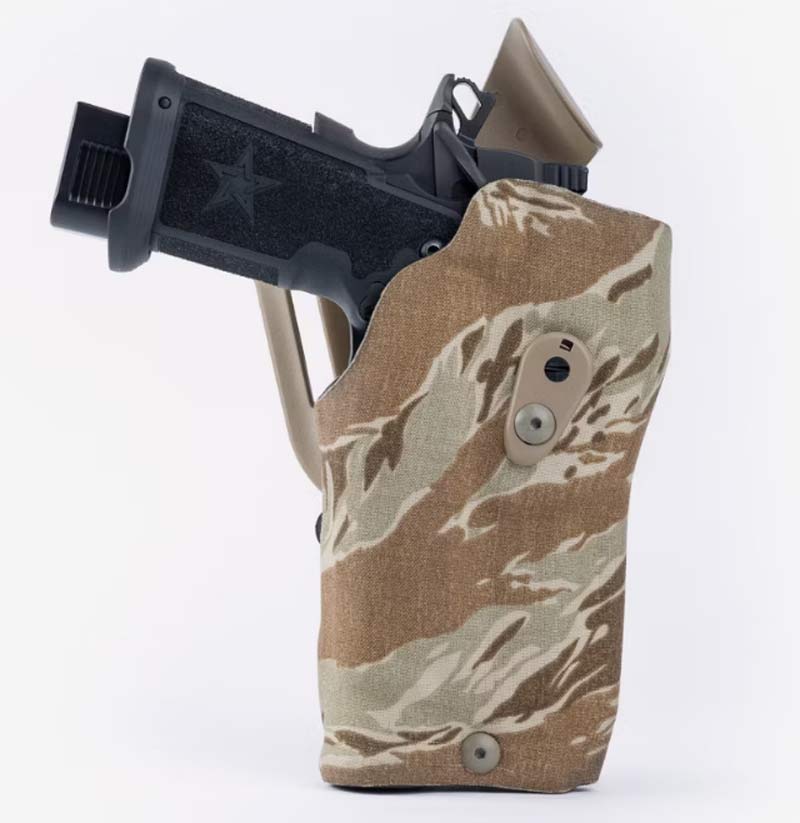
Kryptek Nomad
While deployed during the Iraq War, Butch Whiting and Josh Cleghorn devised the unique camo pattern known as Kryptek, and after leaving the military they launched their Idaho-based camouflage company. After being tested by the U.S. Department of Defense, and coming up as a finalist in the U.S. Army’s efforts to field a new camo pattern, Kryptek secured contracts with police departments around the country.
Both Kryptek Highlander and Kryptek Nomad were inspired by natural elements, and though the Highlander wasn’t specifically made for arid conditions, its muted earth tones are well-suited to such environments. The Kryptek Nomad takes it even further, as it contains no lush or vivid colors, and its palette is limited to dry desert colors, mimicking a harsh environment without water or shelter.
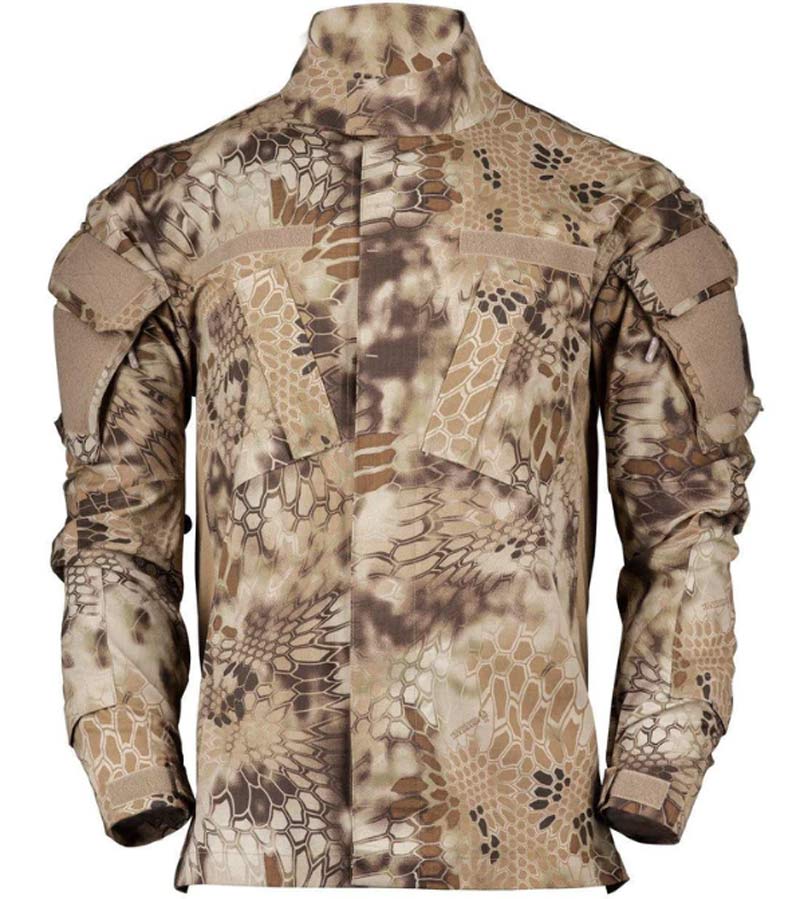
Desert camouflage continues to improve, just further highlighting how far we’ve come from simple khaki.

